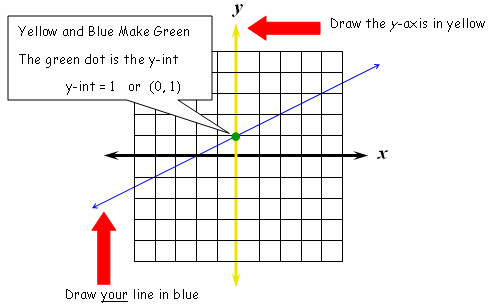
 |
|
|
|
y-intercept: The Start of Your LineThe y-intercept of a line is nothing more than an ordered pair. The only special thing about the y-int is that the x-value must be zero.
Notice the common trend, the first number (x) is always 0.
To find the y-int, plug in x = 0 for your equation, and solve for y.
Instead of writing the y-int as (0, 3), we can also write it as...
The y-intercept is also often written as b = 3. We use the letter b to represent the beginning of the line. We use this to help us graph a line in the coordinate plane.
The y-int from a graph is still the y value where x = 0. Luckily, there is a really easy way to find it. Just look for the place where your line crosses the y-axis.
The y-int is the green dot shown above. The x-value is 0, and the y-value is 1. That is why the point is (0, 1).
The y-intercept is often paired with slope. Learn how to graph using the slope and y-intercept or take a look at slope intercept form.
|
| . | ||
| Home │ Site Search │ Math Help Blog │ Help Keep GradeA Free | |
Written by Team GradeAmathhelp.com, all rights reserved. | ||


